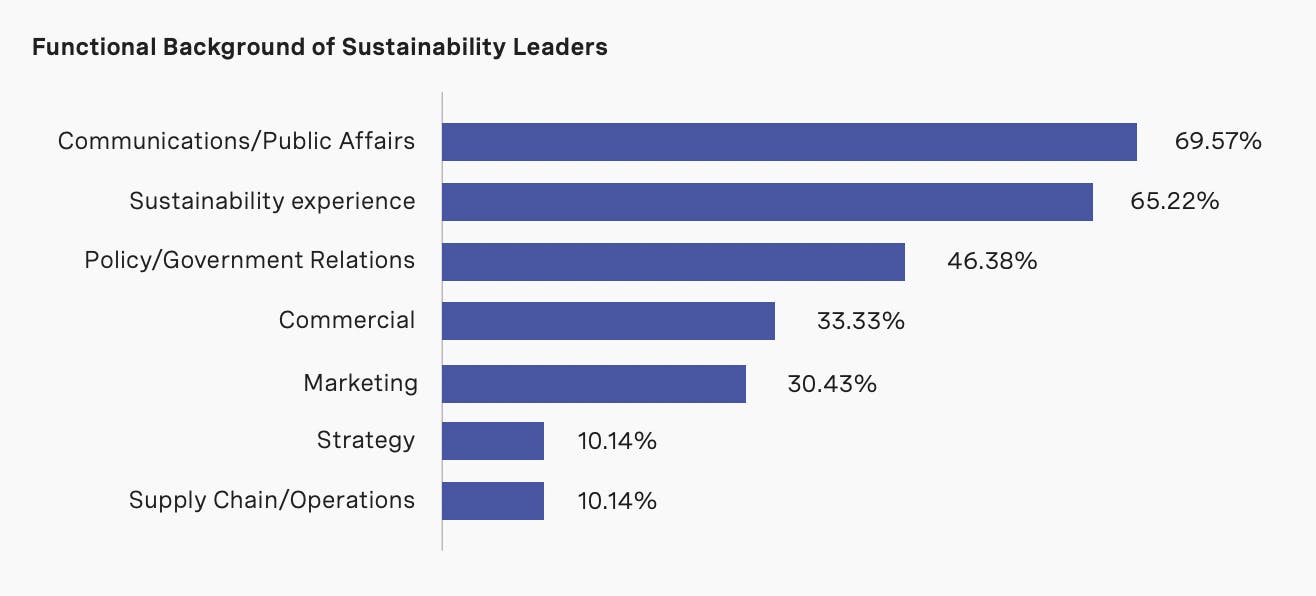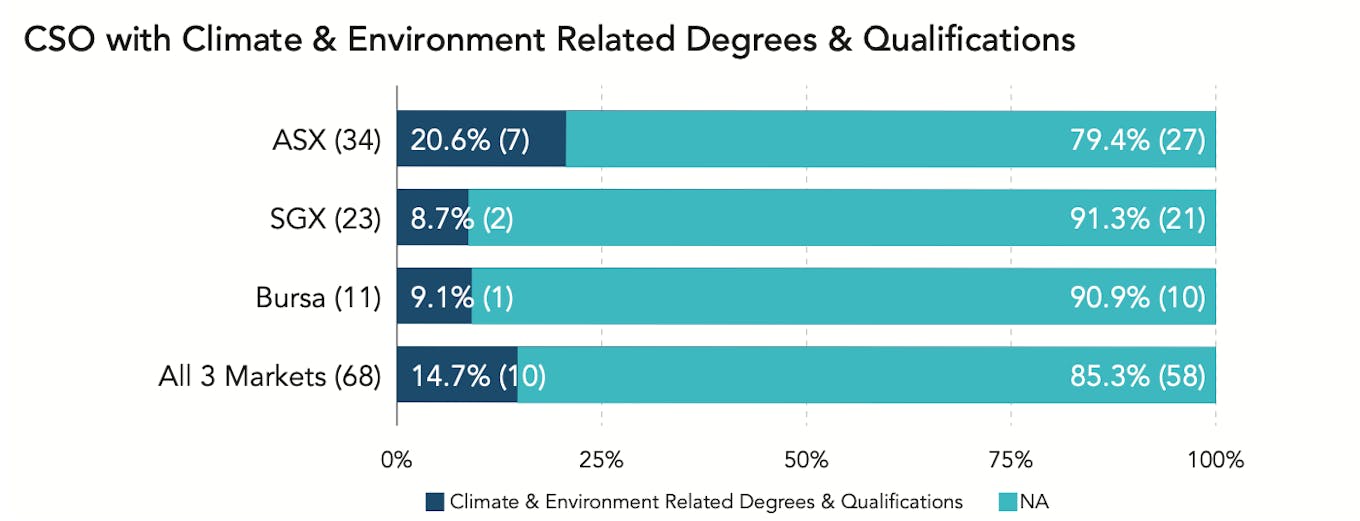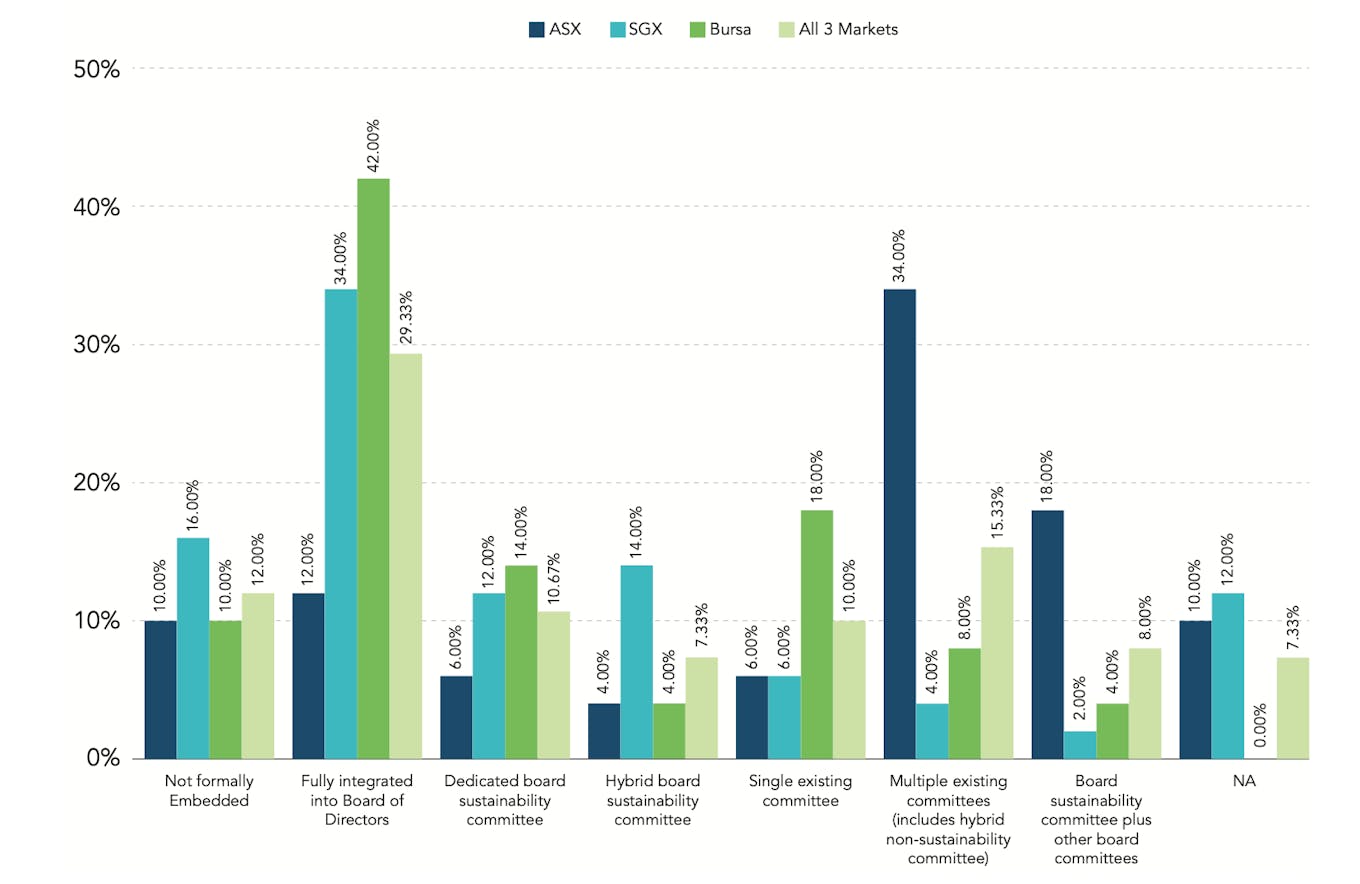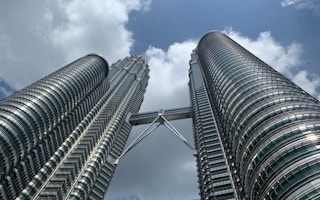One way to tell if a company is prone to greenwashing is to look at where the sustainability function sits in the corporate structure.
If the sustainability team is more closely linked to the communications department or if a sustainability chief has a communications background, the company is more likely focused on spinning a positive story about its environmental, social and governance (ESG) credentials than actually doing the hard work of turning the business into a better corporate citizen. Or at least that’s how companies that approach sustainability in this way are often perceived: image ahead of action.
In Asia, where data finds that most corporate sustainability departments have evolved from the communications function – a trend likely due to a dearth of talent that can adequately fill these roles – concerns of brands prioritising their marketing strategies over action are not unfounded. According to a study by recruitment firm Russell Reynolds Associates last year, 70 per cent of corporate sustainability leaders in Asia have a communications background – a much higher proportion than in other regions, where sustainability heads tend to come from more senior, strategic roles.

The functional background of sustainability leaders in Asia. Almost 70 per cent come from a communications or public affairs background. [Click to enlarge] Source: Russell Reynolds Associates
With only one in 10 sustainability heads in Asia having professional backgrounds in strategy or supply chain management, Asia’s sustainability leaders are more likely to fit the “storyteller” mould, the study points out. In a separate analysis of the largest listed firms in Asia, it was also found that only about 27 per cent of chief sustainability officers (CSOs) in Malaysia and 17 per cent of CSOs in Singapore have both ESG-related qualifications and prior working experience in the field.
Experts who have experience in ESG hiring or have directly worked in sustainability roles tell Eco-Business that individuals who have a strong background in communication do have skills that a CSO must possess, including being skilled in connecting internal and external stakeholders, building brand equity and managing reputational risk, but the impression that they are less focused on the work of improving the company’s environmental footprint still sticks. Proper reporting structures with defined responsibilities need to be in place for “communications CSOs” to do their job well, they said.

Less than 10 per cent of CSOs managing the sustainability function in some of the largest firms listed on SGX (Singapore Exchange) and Bursa, Malaysia’s stock exchange have climate- and environment-related degrees and qualifications. Source: Who Governs Sustainability
Michelle Chan Crouse, who leads Russell Reynolds’ sustainability and consumer practice, said that for multinational corporations who have a presence in Asia, the major decisions might still be made outside of Asia, and so the sustainability officer’s job is to communicate decisions rather than originate them. The Russell Reynolds’ study also points to how 43 per cent of sustainability executives in Asia were in the role for only one to three years. To be realistic, most sustainability practitioners working today started out in another discipline, given the small talent pool, said Chan Crouse.
Impact and mandates
As sustainability matures, corporations are more likely to create a standalone sustainability unit, allowing for more cross-functional collaboration and autonomy for sustainability leaders, or elevate the status of the CSO to the C-suite. But CSOs with this sort of clout are still a rare breed in Asia.
Darian McBain, former chief sustainability officer of the Monetary Authority of Singapore and seafood giant Thai Union who now runs a sustainability advisory firm for businesses in Asia, observes that where sustainability is positioned reflects where the organisation thinks the highest risks are. If sustainability is considered a legal risk, the sustainability lead may report into the legal counsel or chief risk officer. If sustainability is seen as a marketing opportunity, the function may report into marketing communications, she said.
Similarly, in heavily-regulated industries, like tobacco, sustainability chiefs tend to be parked in government and corporate affairs. “This is not to say that these reporting structures are wrong, but it does highlight where the organisation sees the impact of sustainability will be driven through,” McBain said.
A company that takes sustainability seriously is more likely to appoint a sustainability chief that reports directly to the chief executive officer, is part of the executive leadership team, and has regular access to the board and key stakeholders, she said. While at Thai Union as CSO, McBain was close to the company’s founders, and was able to engineer a deal with Greenpeace to end unsustainable and exploitative practices that became a benchmark for the seafood industry.
“
If the sustainability lead reports to the chief executive officer, is part of the executive leadership team, and has regular access to the board and key stakeholders, it says that from a governance perspective the sustainability role is being taken seriously and has been empowered to drive real impact.
Darian McBain, former chief sustainability officer Thai Union and Monetary Authority of Singapore
In a report published by Sustainable Finance Institute Asia and Governance for Stakeholders published this year, it was found that two types of sustainability governance structure emerged as most common among large listed firms in Asia, with the entire board overseeing sustainability without any committee being tasked with specific climate goals or deliverables, or multiple existing committees taking on that responsibility.
The three existing committees most commonly involved in sustainability governance are the risk committee, audit committee and remuneration committee.

Models of sustainability governance adopted by about 150 sample companies in Australia, Malaysia and Singapore. Image: Who governs sustainability
Prof Mak Yuen Teen, a corporate governance expert and the lead writer of the report, said that it is important that the bodies and individuals responsible for sustainability governance and management have the appropriate mandate and support. “They should also not rely solely on information provided by those reporting to them, but proactively consider what information is necessary for them to discharge their responsibilities.
Insufficient information on reporting structures
Regulators have generally not prescribed that companies should form a separate board sustainability committee, which Prof Mak said is a sensible position as simply creating an additional committee does not mean that a company will be more effective in addressing sustainability risks and opportunities. Further, there is a risk of fragmentation of the board’s responsibilities if there are too many different committees.
In a recent report by PwC, CSOs that report to the CEO were labelled “CSO with impact”, those that don’t dubbed “CSO light”.
A key issue in Asia, however, is that it is hard to discern who the CSOs are reporting to, let alone further analyse if the reporting structures matter for an effective climate strategy.
In the report on Asia’s listed companies, it was found that almost half of Malaysian (45 per cent) and Singapore (48 per cent) companies that have appointed a CSO do not indicate who they report to. For the minority of companies that disclose the reporting relationship, the CSO most commonly reports to the CEO or equivalent. The report also found that only about 22 per cent of the listed firms in Malaysia surveyed have appointed a CSO.
Double-hatting sustainability officers
Eco-Business did a scan of companies and also spoke to sustainability officers who have communications background to understand what they think are the pros and cons of double-hatting. Prominent brands such as fizzy drinks giant Coca-Cola, engineering firm ABB, online delivery brand Foodpanda and automaker BMW Group Asia all have sustainability chiefs who double-hat as communications executives. BMW’s Singapore-based Asia sustainability lead is a communicator who recently moved into a sales role.
One former head of sustainability and marketing for a Singapore-based e-commerce brand, who preferred not to be named, said she started out as head of marketing and took on a sustainability role because she volunteered for it. “It was a huge passion of mine, and it made sense as I owned a marketing budget – I was able to allocate money to sustainable projects.”
In her role as head of marketing and sustainability, she led projects to use reusable packaging and reduce single-use plastic. “I was lucky enough at the time to have a managing director who really cared about the topic - and was able to hire headcount to support me. Not all management had the same view though, so a big way to justify initiatives was by PR value,” she said.
Anita Neville double-hats running communications and sustainability for Golden Agri-Resources, the world’s second largest palm oil producer. A former journalist, Neville argues that the qualification of the person in the role and their experience and competency is more important than where they sit in the corporate structure. Communicators are naturally persuasive, she said, and 90 per cent of her job is “persuading the business to go further, faster, and then persuading external stakeholders that we can and we are.”
Working in communications has also given her an overview of the business that has enabled her to connect the dots in ways others don’t. “I see the whole board, as they say in chess,” she says.
Crucial to wielding influence in any sustainability role is access to the leadership team and a seat at the decision-making table, says Neville. The Australian has this sort of influence at GAR, a company that has had serious reputational issues to navigate in recent years.
Michael Reilly, former sustainability manager at the Bangkok Marriott Hotel, said one problem with communications teams leading the sustainability function is the predisposition to communicate before the ESG credentials are solid. This breaks one of the rules for how brands can avoid greenwashing: do it before you say it.
Reilly, who is now a sustainability consultant, shared that he was recently approached by a Thai hospitality brand that wanted help communicating its sustainability efforts. “The strategy had so many holes in it. It was better to say nothing at all, so I walked away,” he said.
Dr Suman Majumdar, the former chief sustainability officer (CSO) of Indian infrastructure conglomerate JSW Group, suggested that many corporations want to be seen as green because sustainability is fashionable and attractive to investors. So communications is the natural home for the sustainability function, even if the company has no real ambition to re-engineer the business for the low-carbon economy.
Even if a sustainability leader enjoys a position of power, they need certain qualities to drive impact, said Majumdar, who led JWS’ sustainability department for more than 5 years. One is to develop and maintain good relationships with the heads of other departments, he said. For this reason, internal hires often make better CSOs as they know how to navigate company politics to get things done.
The successful sustainability officer also knows how to integrate sustainability and commercial objectives, so that the two are not in competition, said Chan Crouse. And perhaps above all, as well as the talent and skills to drive the sustainability agenda, they must have a passion for the topic to have impact, she said.








